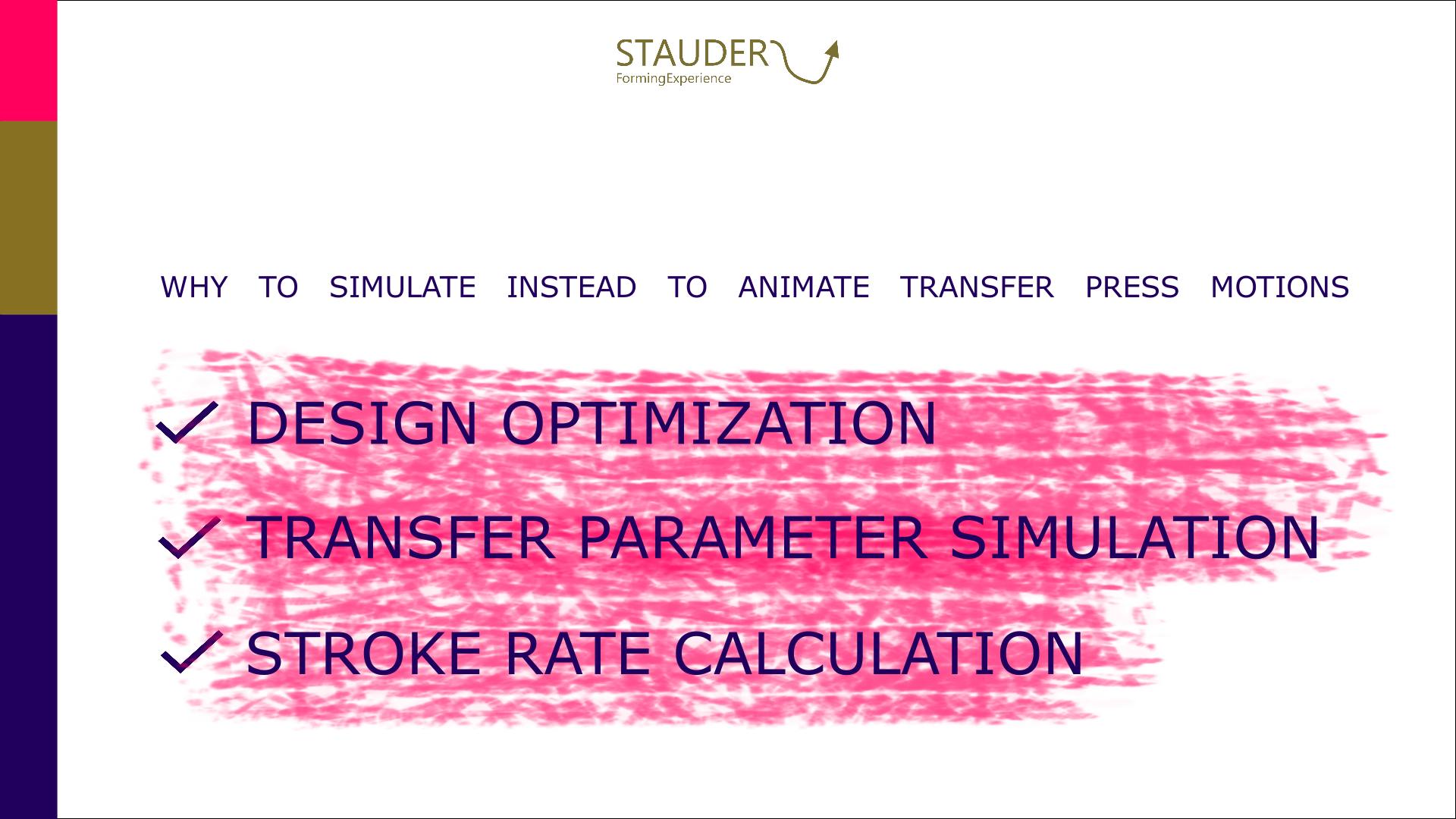05. September 2022
Stamping equipment is characterized by its adjustability. The motions of the system are adjustable and enable the productivity to be optimized significantly. Therefore, it is obvious to use the CAD systems features to emulate the throughput to take advantage of such benefits. The additional gain as well as the effort of such an animation hardly justify the result. A real simulation using press parameters and exact stroke rate calculation is easier to use, faster and finally cheaper.
12. Mai 2022
Today, we all know that servo presses are the best in terms of stroke rate and output. But what can be done when the production time is plenty to cover the demand of parts and at the same time the cost of materials and energy make any previous calculation obsolete?
A slide curve adapted to current requirements significantly reduces variable costs. Instead of aiming for a high stroke rate, it is currently worthwhile to optimize the re-set-up in terms of reduced energy costs and fewer rejects.
10. Mai 2022
AI and machine learning are considered to be ultimate weapons in the handling of large and small challenges. Algorithms process incredible amounts of data and, despite monotonous and repetitive routines, neither feel bored nor lose concentration. Away from the discussion about the possibilities and limits of this, however, humans gain two things. A different way of looking at problems, as well as time for creative solutions. This is the breeding ground for innovation and competitive advantage.
22. Juli 2021
The use of kinematic simulation in the metal forming creates a better understanding of the processes in and on press through visualization. The great advantage is that the entire process can be tested offline and in advance of the existence of real machine or die.
To increase productivity on hot forming equipment, it is not enough to optimize the part transportation within the die clamping area. The entire part transfer process including the heating and feeding process must be simulated.
13. Mai 2021
One of the principles that drives me is "Simplicity is the soul of efficiency".
This sums up what kinematic virtual simulation of press and die movements is for. This 3D CAD data-based methodology is the key to accelerate die design times and minimize machine downtime. But best of all, the combined view of die design in the context of machine movements makes the potential output rate predictable and thus the design optimizable.
05. April 2020
We are receiving dramatic pictures and messages these days.
But isolated glimmers of hope - as is currently the case at the petrol pumps - delight the consumer. And I am sure that just as the sun rises again after every night, we will overcome this crisis together.
Would you like to know how you can save on training in sheet metal forming?
Webinars for press setters provide basic knowledge for the optimal parameters of servo presses and/or for 3D / 3axis transfers.
25. März 2020
Social distancing? Low order volumes? What about the health of the loved ones? …?
A resource that is very rare in normal times - time - has been made available in the production environment.
Webinars offer an ideal opportunity to increase the knowledge of your employees while respecting the present ban on human contact. Use the time that has become free during these days without further interruptions in production, without affecting shift schedules to increase future productivity.
21. November 2019
Whether you want to prepare yourself for the challenges that industry 4.0 / IoT or e.g. as a reaction to electromobility brings, there are many reasons why you want to recruit experts for your company. Providing know-how and expertise in new business fields or niche areas is always a challenge.
We also encounter these challenges in our everyday lives, even beyond the above-mentioned trendy and visionary directions.
16. April 2019
Maximum stroke rates on presses are an obvious must in times of enormous demand, no question.
As soon as the demand for formed parts drops, it is more important to trim the production to maximum efficiency and thus to optimum stroke rates. Specifically, this means re-adjusting the press and 3-axis transfer settings not only in regard of the absolute number of strokes, but especially in terms of the reduction of maintenance and the energy consumption per manufactured part.
18. Januar 2019
Increased productivity and efficiency in the press shop are largely dependent on the knowledge & experience of the setter personnel.
The experience of setting up perfect conditions on your forming equipement can be ordered as a service enabling you for:
- higher stroke rates
- optimum tool durability
- higher profit










